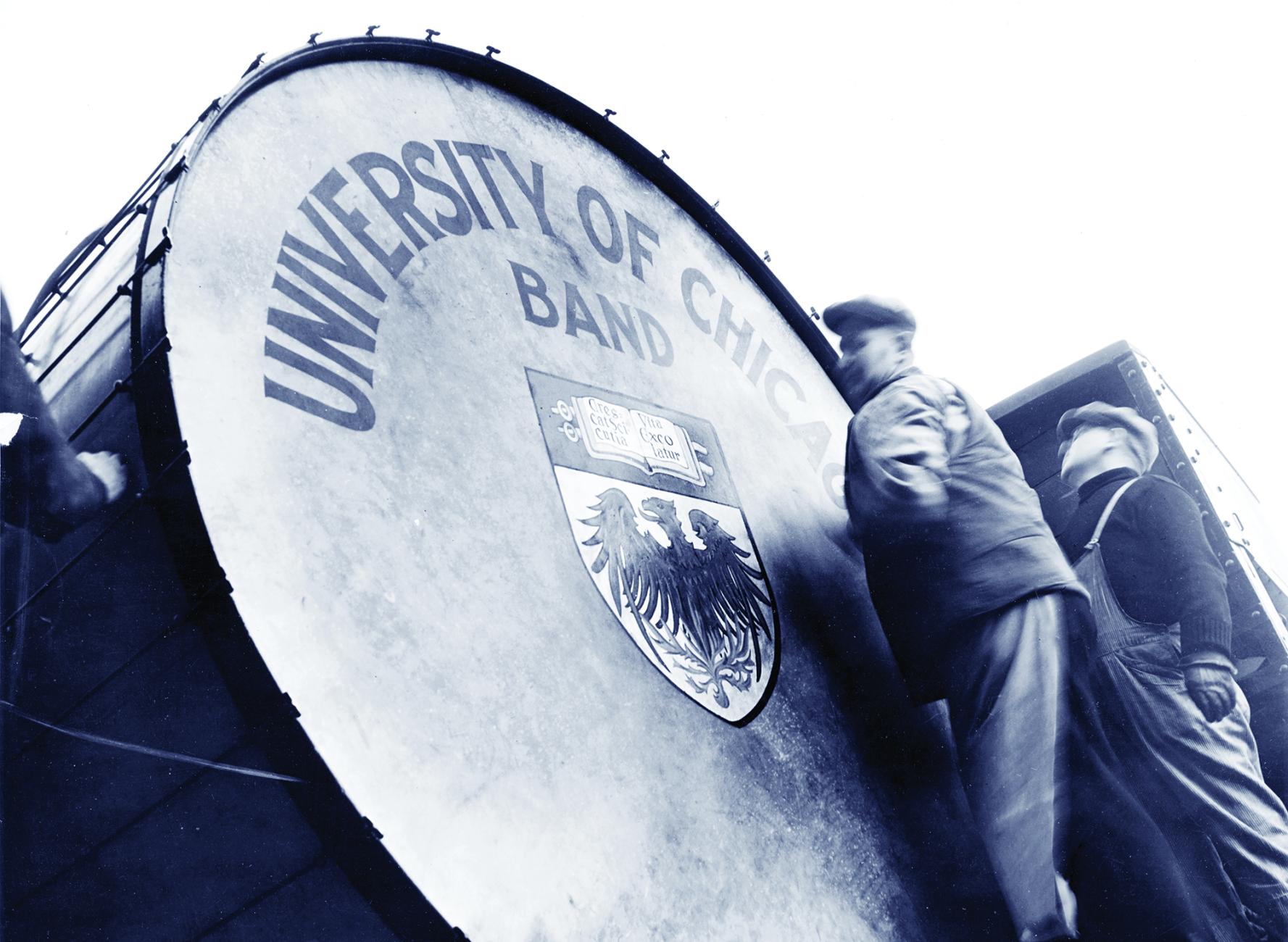
(UChicago Photographic Archive, apf4-01712, Hanna Holborn Gray Special Collections Research Center, University of Chicago Library)
In 1938 Big Bertha answered the Big Apple’s call.
At more than eight feet in diameter, the world’s largest bass drum was long the pride of the University of Chicago marching band. Nicknamed Big Bertha after the German World War I howitzer, the drum joined the band in 1922, along with 100 other instruments donated by Carl D. Greenleaf, SB 1899, president of musical instrument manufacturer C. G. Conn Ltd. Mounted on airplane tires, Big Bertha was wheeled around the football field by six band members.
She traveled the country with the band, was tested for radioactivity after being housed under the west stands of Stagg Field through World War II, and served as an advertising prop for the John Philip Sousa biopic Stars and Stripes Forever (1952). The University of Texas purchased Bertha in 1954 for one dollar, and she has been the “Sweetheart of the Longhorn Band” ever since. (Though a few daring Maroons smuggled her back to Chicago in the late ’50s for a “we want football” rally.)
Years before relocating to Austin, Bertha visited New York City in March 1938. Her famed resonance had caught the attention of Arturo Toscanini, who was preparing to conduct Verdi’s Requiem with the NBC Symphony Orchestra. Join in her New York adventure on the following pages.
If I can make it there
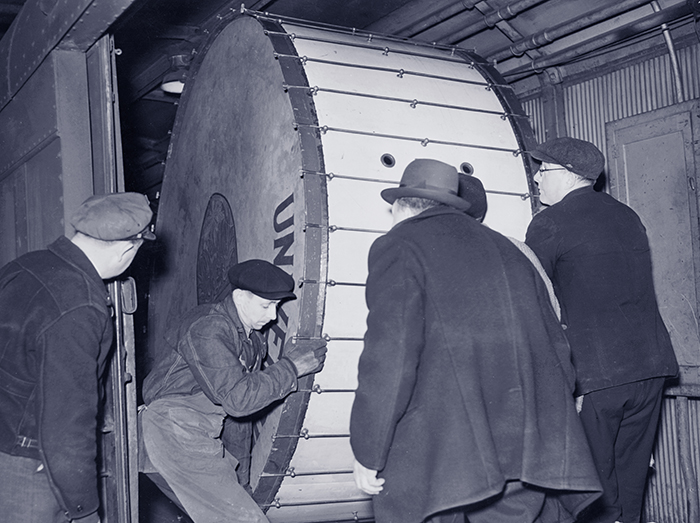
The star of the show turned down a ride on the 20th-Century Limited, the train’s cars not offering sufficient space for such a spectacular drum. Bertha opted instead for a special flat car towed by the Liberty Limited. After a slight delay, she set off on the overnight trip to the East Coast. (UChicago Photographic Archive, apf4-01710, Hanna Holborn Gray Special Collections Research Center, University of Chicago Library)
En route
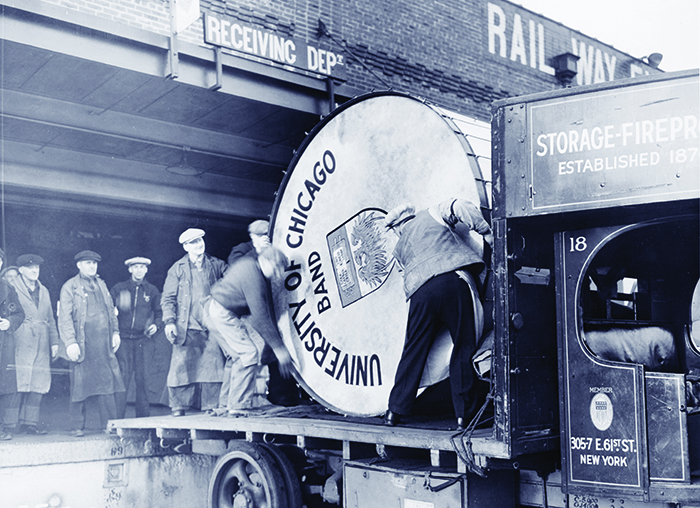
“Big Bertha reached New York this morning, glanced upward for a brief moment to see if the skyscrapers were really taller than she, and rolled straight into the welcoming arms of Arturo Toscanini,” crowed the Daily Maroon. Under ample supervision, Bertha boarded the truck that would hurry her to Carnegie Hall for the show. (UChicago Photographic Archive, apf4-01708, Hanna Holborn Gray Special Collections Research Center, University of Chicago Library)
The only drum for the job
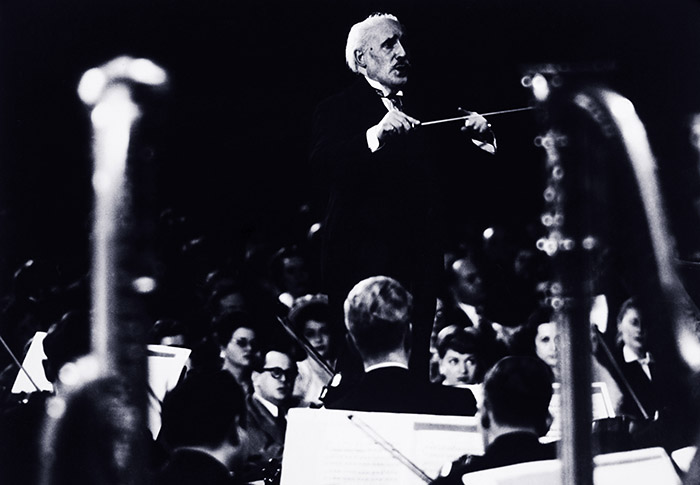
It wasn’t easy to convince Arturo Toscanini, just retired after a decade with the New York Philharmonic, to conduct a new orchestra for radio broadcasts, but NBC succeeded. The NBC Symphony Orchestra debuted in 1937, with Toscanini at its head. He went on to spend 17 years at NBC. For the second-to-last performance of the orchestra’s premiere season, none other than the largest bass drum in the world could provide the final thunderclap in Verdi’s Requiem. (Photo courtesy the Everett Collection)
All for naught
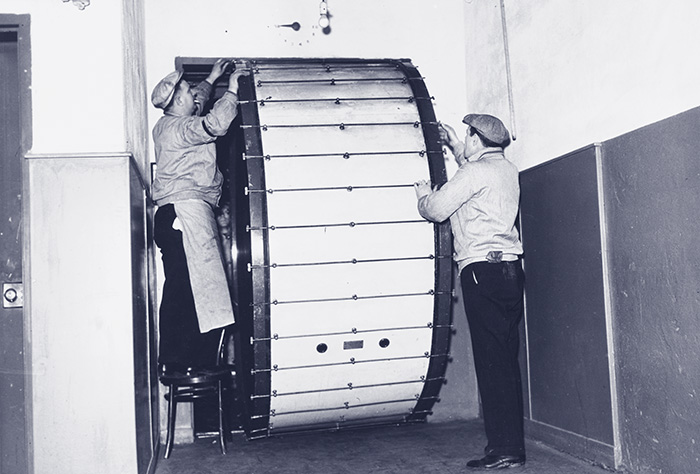
“An NBC headache,” this magazine recalled in 1945. “Bertha staged a sitdown strike at the entrance to Carnegie Hall and refused to enter without removal of a wall.” Apparently Toscanini’s request was too tall an order. With Bertha unable to fit through the stage doors, NBC had a Connecticut American Legion drum do the honors. Realizing she wasn’t a big fan of classical music anyway (she likewise refused to enter Mandel Hall each year for the UChicago band’s formal concert), Bertha returned home, happy to be reunited with Stagg Field and properly topped hot dogs. (UChicago Photographic Archive, apf4-01719, Hanna Holborn Gray Special Collections Research Center, University of Chicago Library)
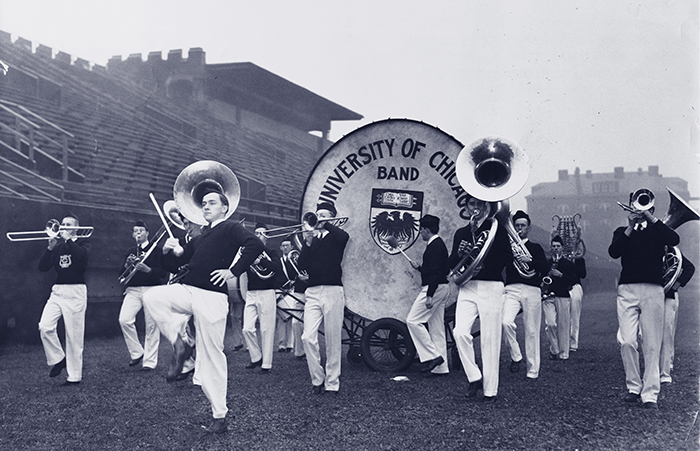
(UChicago Photographic Archive, apf4-01704 , Hanna Holborn Gray Special Collections Research Center, University of Chicago Library)
